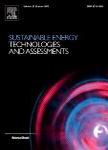版权所有:内蒙古大学图书馆 技术提供:维普资讯• 智图
内蒙古自治区呼和浩特市赛罕区大学西街235号 邮编: 010021

作者机构:Natl Inst Technol Raipur Dept Informat Technol Raipur 492010 Madhya Pradesh India LUT Univ Dept Software Engn LUT Sch Engn Sci Lappeenranta 53850 Finland
出 版 物:《SUSTAINABLE ENERGY TECHNOLOGIES AND ASSESSMENTS》 (可持续能源技术和评估)
年 卷 期:2022年第54卷
核心收录:
学科分类:0820[工学-石油与天然气工程] 08[工学] 0807[工学-动力工程及工程热物理]
主 题:Smart Environment Android Malware Detection Sustainability Ubiquitous computing
摘 要:Android-based smart devices cater to services in almost every aspect of our lives like personal, professional, social, banking, business, etc. However, people with increasingly dependent on the smartphone, malicious attacks against these gadgets have increased exponentially. To achieve a secured smart environment for future sustainable computing, android-based smart devices must provide more resilient and attack-resistant commitments, so that the android malware detector, once trained on a dataset, can continue to identify new malware without retraining. However, most of the existing malware detection approach suffers from a high false-positive rate and low detection rate of new malware variants. Motivated by the aforementioned challenges. In this paper, an Optimized and efficient Ensemble Learning-based Android Malware Detection framework, called OEL-AMD is proposed. This framework employs statistical feature engineering to eliminate non-informative features as well as encode statistical characteristics, and Binary Grey Wolf Optimization (BGWO)-based meta-heuristic feature selection is used to prepare optimal feature sets for static and dynamic layers. Subsequently, different base learners are trained using hyper-parameters tuning to boost the inductive reasoning capability of the ensemble model for classification, and an aggregated performance is computed. The obtained highest classification accuracy is 96.95% for binary and 83.49% for the category classification using static and dynamic layer features, respectively reveals the promising performance. Further, the obtained results are compared with the existing methods, and statistical significance is evaluated. The statistical test verified the significance of the obtained results.